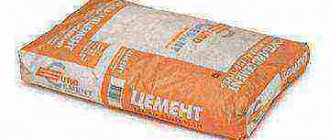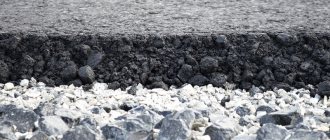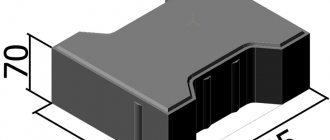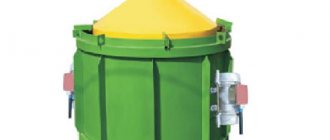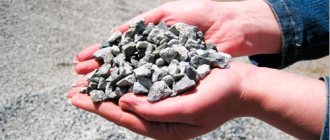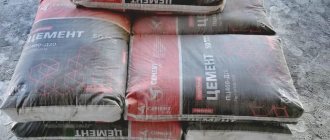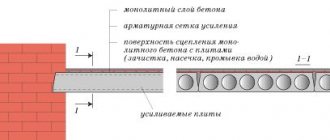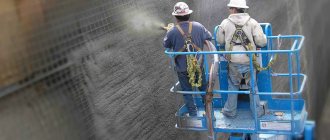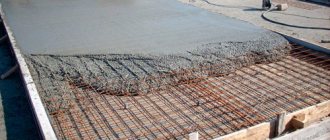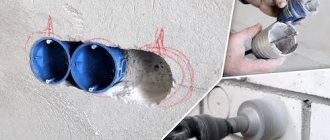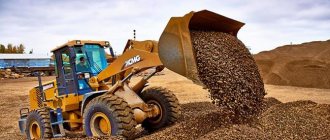Scope and types of hammer crushers - Click!
Hammer crusher is used in many industries.
The main work of a crusher is to crush and grind solid substances and materials in order to subsequently produce various solutions, mixtures and other substances from the resulting raw materials.
The hammer crusher is a fairly popular tool and occupies a decisive position in the entire production cycle.
Where is it used?
Crushing of materials is most often used in the agricultural sector. The grain hammer crusher is an important element in the production line of the highest quality feed products.
Grains of cereals and leguminous crops require special processing using specialized equipment. (By the way, read this article about the features of feed choppers).
The hammer crusher combines such important qualities as high speed of operation, reliability of the main components and assemblies, simplicity of design, safety in operation and compactness.
The product obtained after crushing is of high quality, which allows us to produce complete feed of the highest quality with the addition of high-tech fortifying additives.
The main internal structure of hammer crushers:
- hammer drum;
- loading funnel;
- hammers;
- decks;
- sieve.
Kinds
Closed Hammer Crusher
There are hammer crushers of open and closed types. The main characteristic of open type crushers is to crush only substances with a low degree of moisture, as well as fragile substances and materials.
Large pieces are crushed using hammer blows and the product is quickly removed from the crushing chamber. When moving inside the drum, it does not close a circle. This type of crusher most often crushes chalk, granules and shells.
In closed type crushers, the loaded material moves around the circumference of the crushing chamber several times. Next, the product becomes quite loose, and crushing hammers come into play. The final result is obtained from the combined impact action of crushing hammers and grinding of the substance during friction in the crushing chamber.
Basically, hammer crushers are used for materials that have a small or medium safety margin. The hammer crusher does not process sticky and viscous materials.
Principles of separation
Double Rotor Hammer Crusher
Number of working shafts:
- crushers with one working shaft;
- crushers with two working shafts.
Number of rotors:
- crushers with one working rotor;
- crushers with two working rotors.
Crushing hammer mounting type:
- crushers with freely moving hammers on hinges;
- crushers with rigidly fixed hammers.
Crusher shaft with free moving hammers
Hammer position:
- crushers with hammers arranged in one row;
- crushers with hammers arranged in several rows.
Rotor rotation:
- reversible crushers;
- wood crushers.
Flaws
For all its advantages, the use of hammer crushers in industry is overshadowed by its disadvantages:
- Crusher Hammers
- High wear rate of crushing hammers (crushing abrasives increases the likelihood of premature wear).
- Wear of grates when processing substances with a moisture content of more than 15 percent.
- If materials that are not completely crushed are accidentally loaded into the apparatus, damage to the main components and assemblies of the hammer crusher may occur.
- High price for the unit (from about 150,000 rubles).
To crush strong and hard materials, crushers with large, heavy hammers are used and, conversely, for crushing brittle materials, use light hammers.
The hammers themselves are made of high-tech steel, on the surface of which hard alloys are applied.
What pitfalls can you encounter when using a hammer crusher?
Very often, hammer crushers fail due to unbalanced movement of the rotors. Crushers are high-speed machines and their rotors need to be adjusted from time to time to prevent imbalance in their movement.
High dynamic loads on hammer crushers require timely and high-quality maintenance of these machines.
Watch the video in which a specialist explains the features of working on a household grain hammer crusher:
- DmitriiG
Source: https://6sotok-dom.com/instrumenty/drobilka-molotkovaya.html
Hammer crusher for wood
The ALB company produces these devices for pellet granulation lines, mixed feed and other industries.
We will give you a drawing of a hammer crusher for wood produced by ALB Group.
The diagram shows the design of the DM-22 model.
Fig 1. Diagram of a hammer crusher
It consists of the following main elements:
- Frame (1);
- crushing chamber with crushing drum (2);
- 2-stage fan (3);
- intermediate pipeline system (4);
- sluice gate (5);
- precipitating cyclone (6);
- electric motor (7) drive (8);
- electric motor (9) of the sluice gate drive (10);
- magnetic separator (11);
- suction nozzle (12);
- suction hose (13);
- pressure hose (14).
Below is a diagram of the crushing chamber:
Fig 2. Diagram of the crushing chamber
1 – body; 2 – side cover; 3 – shaft; 4 – cover; 5 – disk; 6 – finger; 7 – hammer; 8 – spacer sleeve; 9 – sieve; 10 – clamp; 11 – deck; 12 – fan casing; 13 – rotors; 14 – front cover; 15 – rear cover; 16 – pipe; 17 – pipe; 18 – pipe; 19 – hose; 20 – pulley; 21 – double-row spherical roller bearing 3610 GOST5721-75; 22 – key 18x11x388; 23 – key 14x9x56; 24 – key 14x9x90; 25 – eccentric.
Crushing chamber housing
- This is a welded steel structure with inserted side covers. They are rigidly fastened with bolts and carry the main shaft bearing housings. At one end of the shaft there is a six-strand drive pulley, at the other there is a two-stage fan.
The housing also has an additional cover that is secured with bolts, which serves to replace grates that wear out during operation. Behind the sieve there is a specially shaped neck, which continues with a pipe - they form an ejection (discharge) chamber.
Inside, on the walls of the case, there are two relief cast-iron decks, on which sawdust is crushed.
The main shaft passes through the center of the chamber, on which 6 disks are mounted at regular intervals, forming a crushing drum
. The discs are pierced with steel pins on which sets of crushing hammers are hinged.
Mill electrical equipment
– this is a 22 kW electric motor (for the DM 22 model), an associated control box (with starting, monitoring and protection equipment) and a limit switch. The latter serves as a safety device against starting the device if the camera cover is open. The DM crusher is protected from short circuits, has thermal relays for thermal and zero protection, as well as fuses for control circuits.
Working principle of wood hammer crusher
Grinders equipped with a pneumatic system automatically take raw materials through a loading hose into the cyclone. If a pneumatic system is not installed, the material is loaded with a screw conveyor or similar. A magnetic separator is installed before the entrance to the cyclone, which separates metal impurities from the wood pulp. In the cyclone, the mass of sawdust and wood chips is separated from the air flow. The air is directed through a side hose to the fan, and the chips fall onto the airlock and then into the crushing chamber below.
The crushing drum rotates in the chamber at high speeds, and hammers mounted on it strike the material, breaking it against the cast iron decks. The chips are crushed until they reach the fraction that could pass through the grate installed below. By installing sieves with different mesh sizes, you can adjust the degree of grinding.
Classification of hammer crushers
These units differ in the following parameters:
- By number of rotors
: with one or two rotors;
- By shaft location
: with horizontal or vertical shaft;
- WITH reverse mode
or without it.
Shredders with reverse mode can rotate their shaft in both directions. If one side of the hammers is worn down, you can reverse the stroke of the shaft to use the impact elements on the other side.
These devices also differ:
- Dimensions of the chamber and rotor;
- Shape of hammers;
- Electric motor power.
Hammer crushers in pellet line
In pellet and briquette production, compact hammer wood chippers are in great demand.
They have a number of significant advantages:
- High service life of working parts: 3-4 months can pass between replacing hammers.
- From a maintenance point of view, this is a simple and unpretentious equipment.
- Higher productivity compared to a pneumatic impact crusher (PIC) with the same engine power. Such mills are often installed in industrial lines with large production volumes.
- Thanks to the design features, the material does not stick to the hammers and does not clog the grates.
- Possibility of grinding wet wood chips.
Main types
The lower limit for crushed stone in terms of compressive strength is 300 MPa. This material is not widely used in construction, but still has a small circle of consumers. The main part of the market has long been captured by stronger rocks from M600 to M1200. In order to crush such strong stones to the required fractions and obtain high-quality building materials as a result, it is necessary to select the correct crusher designs.
They are considered universal machines for crushed stone, as they are capable of processing rocks of any strength. Grinding occurs between two heavy plates, one of which is movable, and the second is permanently fixed. The upper gap of the cheeks can be changed depending on the initial size of the raw material up to 1.5 m. The size of the output fraction is adjusted in the same way.
Despite the simplicity of their design, these machines are quite capricious: they require regular inspections and frequent repairs. When using jaw crushers, it is recommended to periodically replace the wear plates, as they wear unevenly during operation. You can also reduce equipment maintenance costs by making a more durable overlay of wear-resistant metal on them. The disadvantage of these crushers is the high content of flakier grains in the finished crushed stone, which is a sign of its low quality. The reason for this is the features of the machine, which does not break, but compresses and delaminates stones.
The operating principle of a cone crusher for crushed stone is somewhat similar to the destruction of rock in jaw models. But the abrasive planes here have a three-dimensional shape, and the rotation shaft is specially unbalanced. Due to this, the flakier grains experience impacts in different directions, break across and take on the appearance of cubes. In addition, when passing through a small gap between the cones, the needle-shaped stones collide with each other and collapse faster.
A cone crusher for crushed stone is considered one of the most reliable; it is no more difficult to operate than a jaw crusher and is just as easily adjusted to different sizes of the input and output product. These are rather bulky units aimed at producing medium-sized cube-shaped gravel. A special feature of such crushers is the consistent fractional composition of the finished mass.
Capable of crushing crushed stone to the smallest fractions. Strong beaters attached to the shaft “drive” the rock inside the snare drum, splitting it with powerful blows. Re-grinding occurs when the fragments fly to the walls of the crusher and break there on the lining plates.
But with this method of rock destruction, it is impossible to control the size of the gravel at the outlet, so after crushing the entire mass is sent to dispersing screens. A disadvantage of rotary crushers is also considered to be the limitation on the hardness of the raw materials - no higher than average. In large industries they are used only at the second stage of grinding.
They are produced only in two types: for fine and medium crushing of crushed stone. Rock destruction occurs between rotating counter rolls. They themselves can have a smooth, jagged or textured surface for working with materials of different strengths. Nevertheless, the strength of the crushed raw materials should not exceed average values.
| Model | Type | Productivity, t/h | Max. loading size, mm | Price, thousand rubles |
| SMD-741 | Cheek | 23 – 53 | 900 | 1 250 |
| KSD-600 | Conical | 19 – 40 | 90 | 550 |
| SMD-94B | Rotary | 210 | 600 | 3 150 |
| DV-400Z | Valkovaya | 25 – 55 | 250 | 720 |
You won't be able to buy a used unit at a more reasonable price. Even if they have been well used or restored after major repairs, they will not become much cheaper. The relatively low cost of a crusher for the production of crushed stone can only be found in very small models that process up to a ton per hour, or compact laboratory crushers. But they will also cost 200,000 - 300,000. For the rental of more serious equipment working in quarries, you will have to pay from 5,000 to 24,000 rubles / cm.
How to do it yourself?
Since it is unprofitable to buy a crusher for small volumes of construction work, technically savvy citizens can try to make it themselves. For your own needs, no particularly powerful equipment is required, and the design of the machine is simple. Drawings and diagrams can be found in old textbooks or on the Internet, and the installation can be assembled from available rolled metal.
Any rocks of sufficient hardness that lie on the surface and are accessible for independent mining are suitable as starting materials. But in home production, gravel is often made from recycled materials or waste from mining and processing enterprises. Their strength is average, so a hammer machine will do.
A do-it-yourself crusher for producing cube-shaped crushed stone consists of several basic elements that will need to be made or purchased used, and then modified:
- Container for mineral raw materials.
- Shaft with grinding elements (hammers).
- A grate with holes of the required size (it is better to have several replaceable ones - for different fractions).
- Electric motor with starting equipment.
- Frame on wheel base.
- Pulleys, drive belt, fasteners and bearings.
All working elements must be heavy and powerful enough to cope with the task of crushing gravel. Thick-walled pipes, cast-iron plates and large-diameter fittings are useful here. It will be cheaper to line the inside of the chamber with separate impact-resistant inserts and weld it from sheet iron.
It is better not to take a used one, but to grind it yourself, if you have the necessary experience, or order production according to existing drawings. The efficiency and durability of a homemade crusher depends on the accuracy of its execution. The rotation speed of the shaft connected to the axis of the drive motor by a belt drive can be changed using pulleys of different diameters. You will also need to make bushings for seating the hammers.
During the manufacturing process of the body, special attention should be paid to welds and bolted joints. A running crusher creates a lot of vibration, so if you want to use it for a long time, ensure the required reliability of the equipment.
